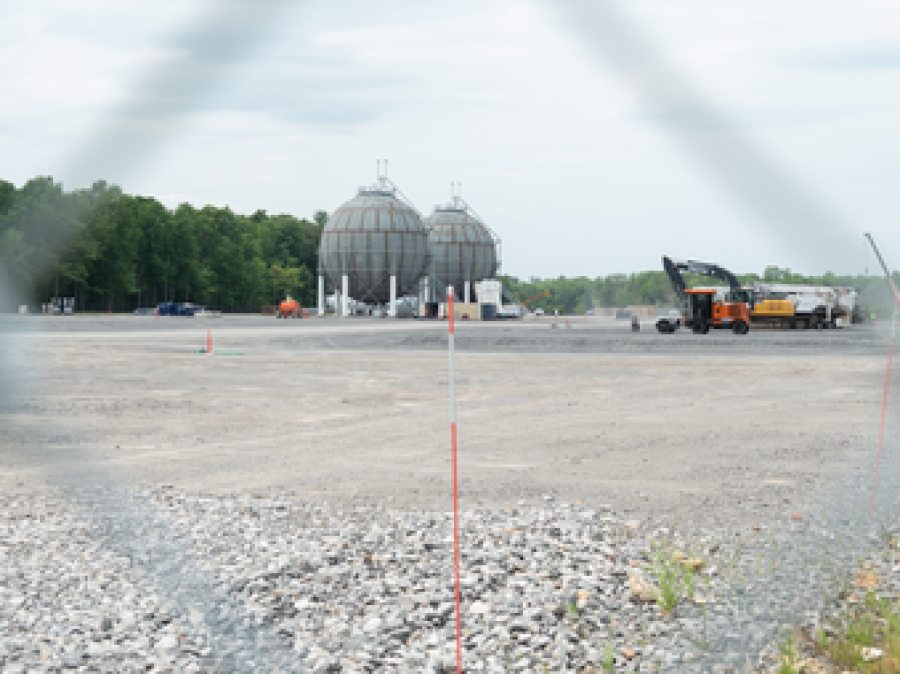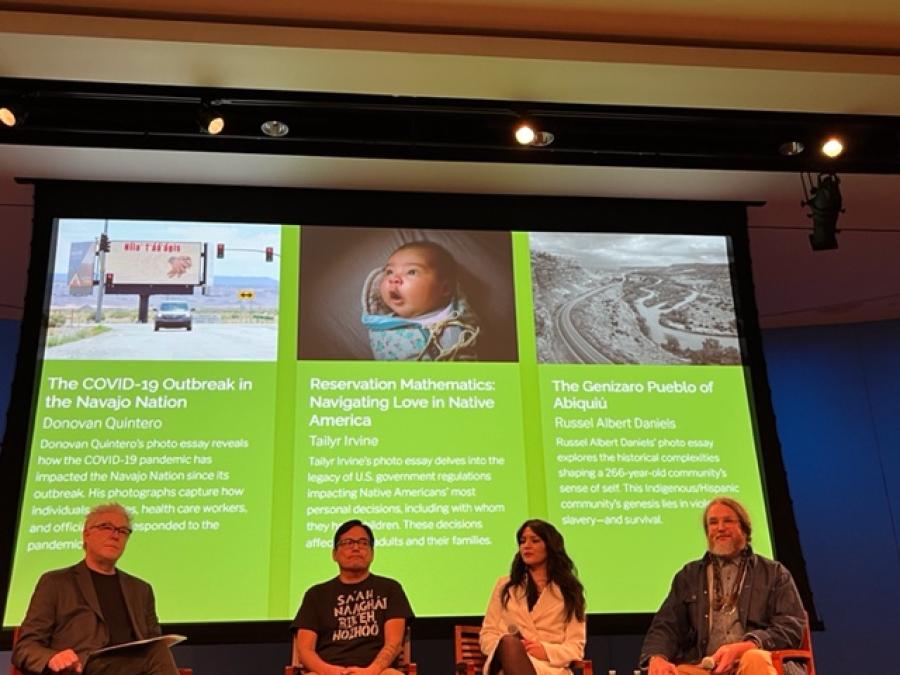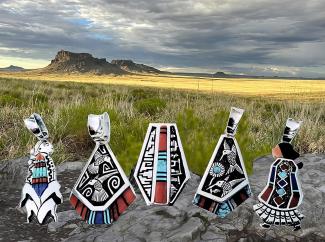
By Tia-Alexi Roberts (Narragansett, CS Staff)
Philbert Begay (Diné/Navajo) learned the century-old art of Navajo silversmithing from his father, Richard Begay, who learned from his own grandfathers. Over time and through much experience, Begay emulated his father and evolved to become meticulous at creating hand-cut, overlaid, hand-stamped, and inlaid designs. The elder Begay imparted his knowledge to his son, beginning with tasks like polishing, buffing, and grinding, and cleanup, instilling in him the essential foundations of silversmithing. Begay explains, “I learned young to create using buffing polishing machines that modern silversmiths and goldsmiths use and that raised me up to that level where people see my work and say, ‘Wow, it’s so polished!’ [Yet], the foundation is still very traditional.”
The significance of traditional Navajo symbols and motifs are reflected in Begay’s silverwork, which showcases how certain elements connect to Navajo culture and history. “The symbols and creations are based on animals and places. The wind, the rain, the skies, the stars . . . something that is all harmonious, and together in the world. Everything is connected; that is the way it is and the way that we live,” he says.
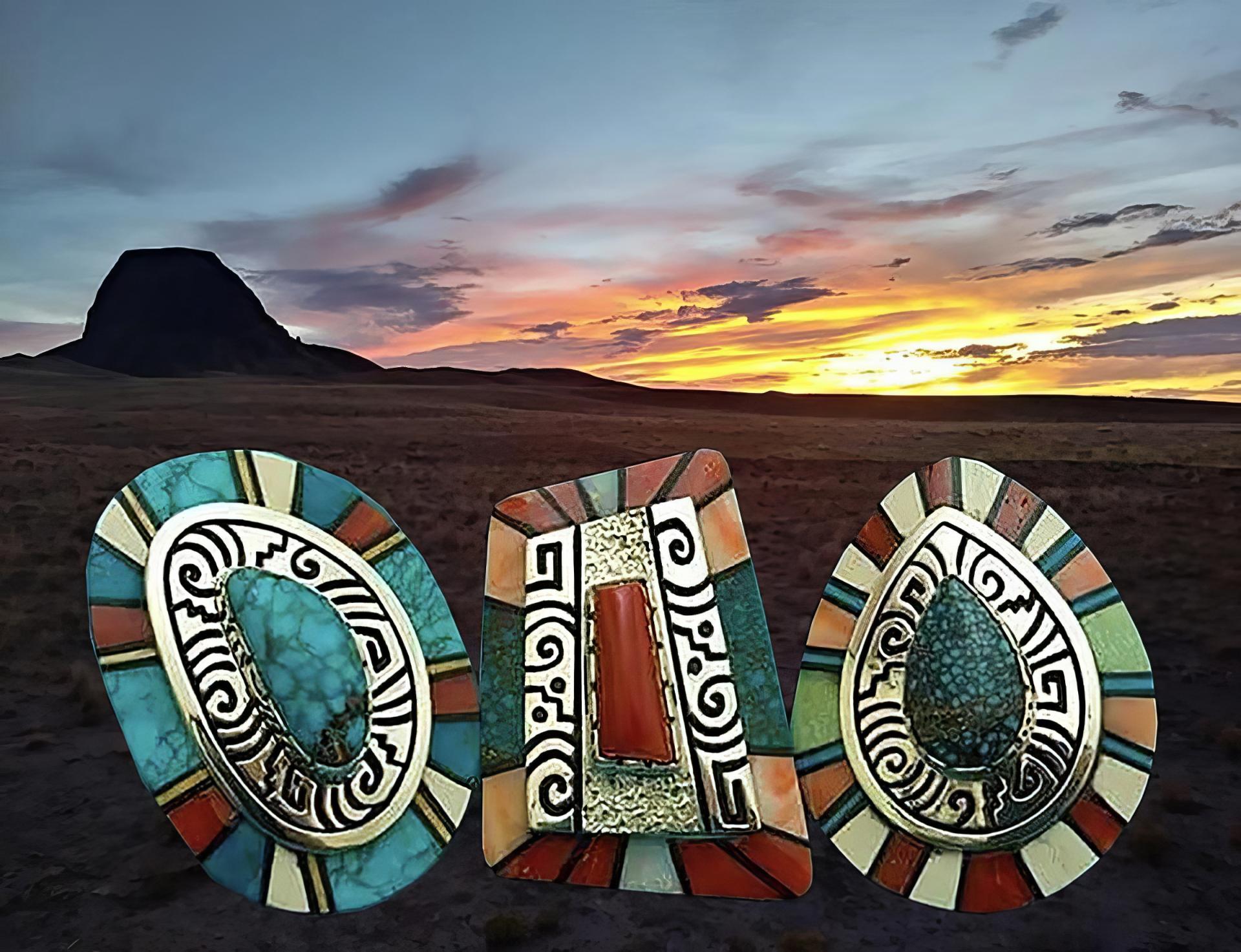
All photos courtesy of Philbert Begay.
Begay says that his process of creation relies on a word lived by his community: “Hozho,” meaning balance, harmony, and everything part of life. “When I design something, I think about that because my grandparents always told me to make it beautiful. That is what Hozho means. They always told me to carry my life that way. So when I create, I always try to put the word Hozho—harmony, balance—[into] everything that I create. That’s the basis of how I create my jewelry.”
He continues, “We are told to make things beautiful and harmonious. It’s that same word, Hozho, and that’s my philosophy on making artwork and creating. I see my work all over the world and I see people happy, I see them telling stories. It’s that connection that matters, and I believe that word makes things beautiful, like I was told by my grandparents.” The sense of harmony and connection extends to collaboration with fellow artists. Begay recalls one such experience: “We created a silver purse one time. Several silversmiths from different Native Tribes incorporated their own designs into a purse and it was auctioned off to charity. It was a really beautiful design that we created, so I do enjoy collaborating,” he says.
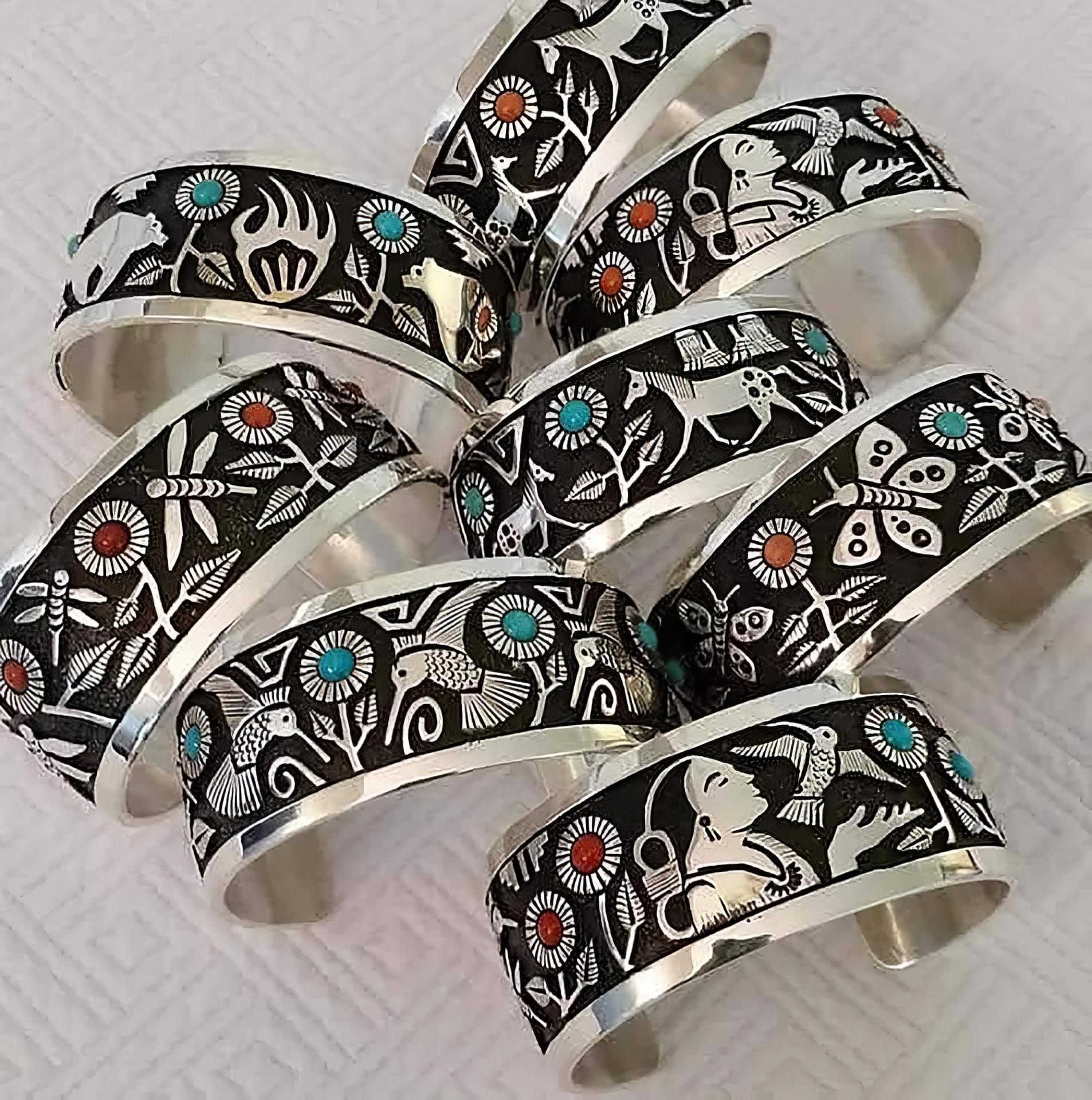
Begay says he can see the future of Navajo silversmithing evolving, both in terms of artistic expression and adapting to contemporary tastes and trends: “A lot of Native silversmiths are moving into modern techniques but the foundation is always traditional. Everything about it—creating, our histories, our stories—is always connected to tradition, but creating modern designs is not bad either. It helps connect people who see modern art because we are modern too, and we are still using our traditional techniques.”
One of the challenges facing Begay is the scarcity of opportunities for Indigenous artists. “I think the outlets for Indigenous artists are very limited where I am, in the Western part of the United States. Doing this event [the Cultural Survival Bazaar] and being able to share my work in Boston with Cultural Survival is another outlet and I appreciate that. Cultural Survival is another opening for Indigenous Peoples to show their work and explain their culture to people. It’s the connection that shows people that this is what we do and how we live, and this is the beauty we create, and that’s something that I love about it,” he says.
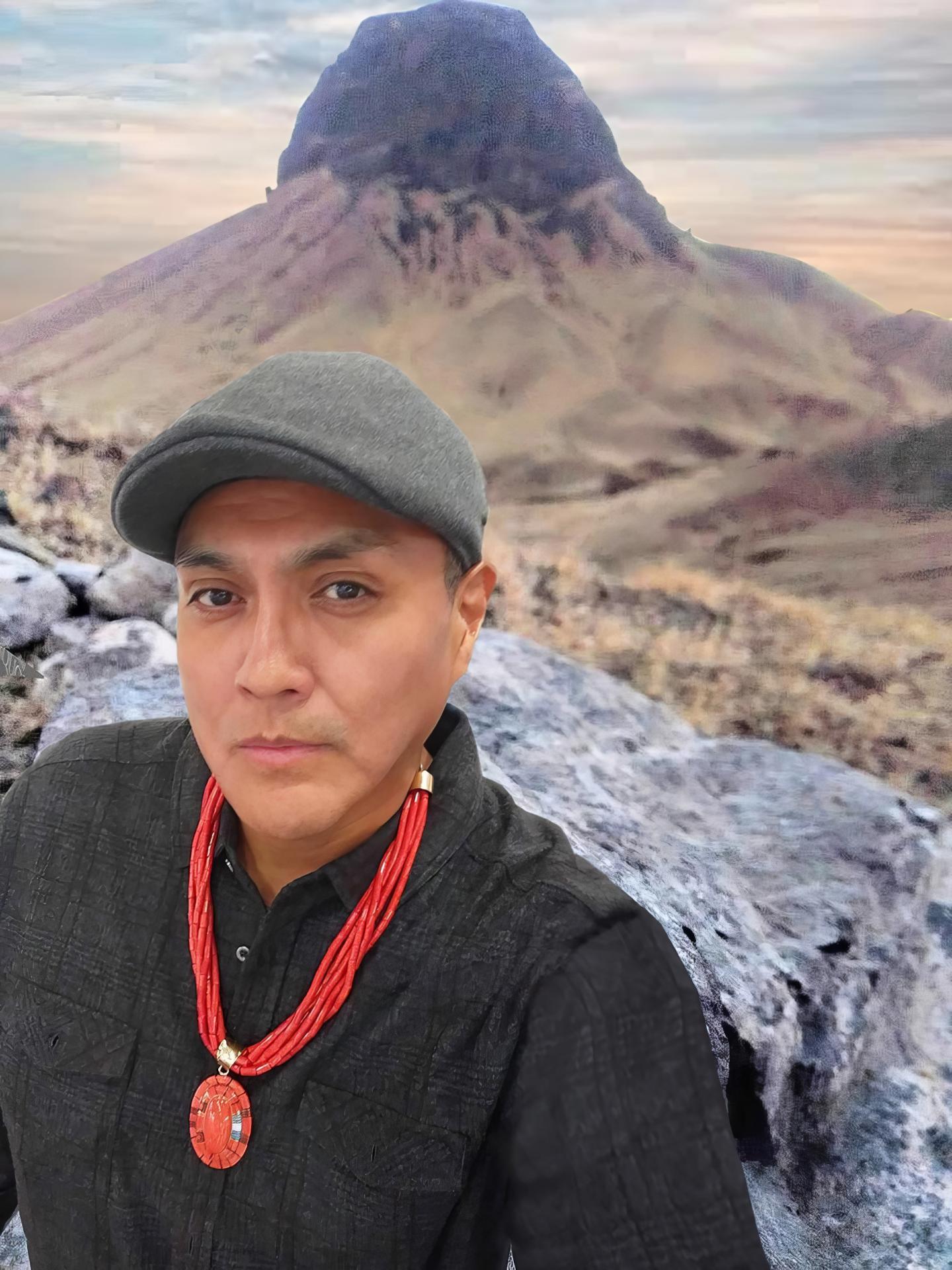
Philbert Begay on his traditional homelands in Arizona.
“Indigenous people sometimes just want to stay safe, but you have to get out there,” Begay continues. “I always tell my nephew, niece, and kids, go out there and go to school, go see the world. Some of them are very limited and want to stay where they’re at. [We need to remember that] we are beautiful, good people, and we have great cultural foundations that we live by. So I try to push them to go and do that.”
Visit the Cultural Survival Bazaar, July 20–21 in Newburyport, MA and July 27–28 in Tiverton, RI. bazaar.cs.org.
